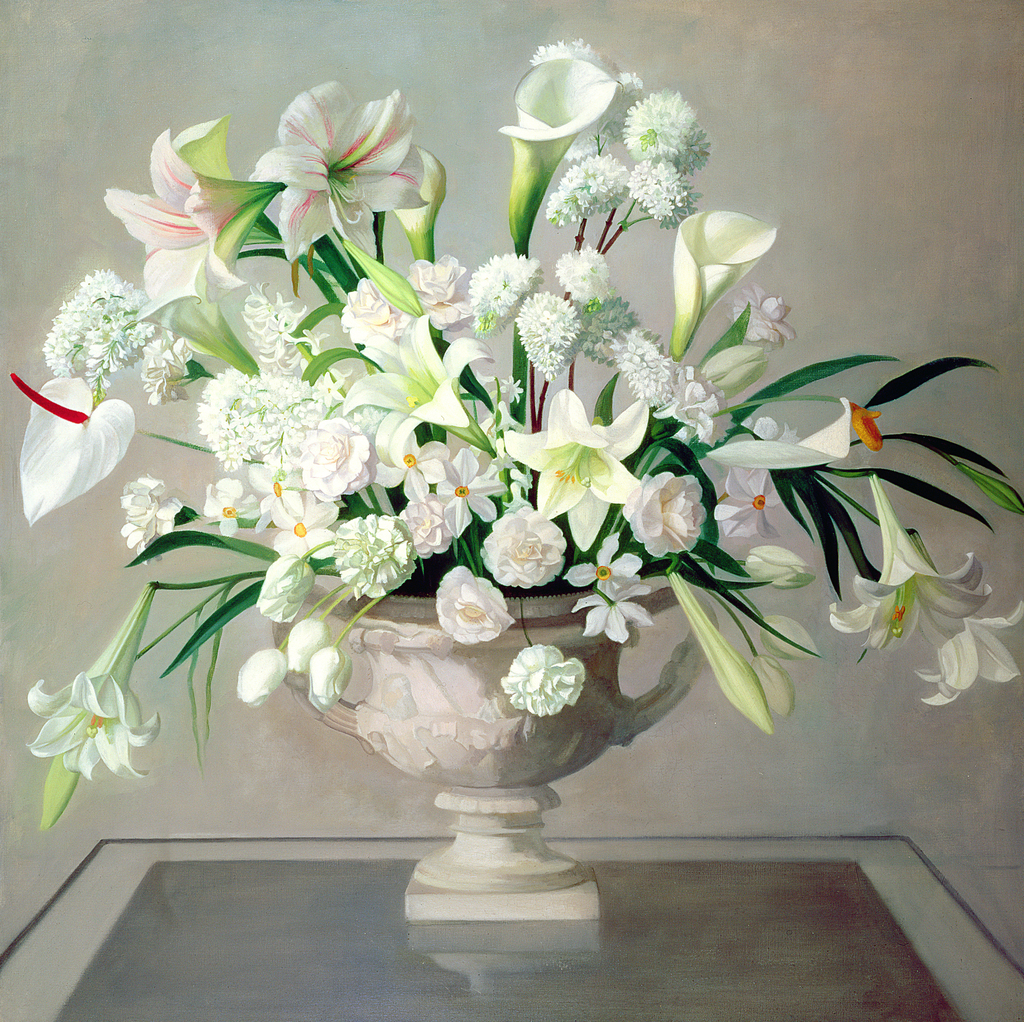Constance Spry and Gluck
In 1932, Spry’s friend Prudence Maufe commissioned a flower display from her to celebrate the completion of the artist Gluck’s new art studio. She wrote to Gluck ‘I think she has a genius for flowers and you have a genius for paint, so that ought to make for happiness.’ Gluck endeavoured to paint the arrangement and over several months had the display reworked each time it wilted. Chromatic, the resulting painting illustrates how Gluck was greatly influenced by Spry’s original arrangement. Constance had an honest appreciation for Gluck’s artwork and a relationship developed between them.
Following this first in-depth study of Spry’s work Gluck painted a significant number of flower paintings which illustrate her arrangements. In Gluck, Spry also found someone who admired her flower arranging as an art form in itself. They shared an interest in the nature and characteristics of flowers, colour and composition and regularly toured the country together visiting gardens. Spry would collect cuttings and seeds, making garden notes for her books whilst Gluck sketched and worked on pieces for her exhibitions. Spry and Gluck developed a close and personal relationship and had an adoring affair. As an indication of their adoration for each Spry became the owner of one of her most important paintings Flora’s Cloak, a painting of the goddess Flora which hung at various times in Spry’s shop and her home. This painting was affectionately know by Spry’s staff as ‘interflora’.
Spry and Gluck worked independently in very different genres but their output was part of a collaborative decorative movement that revolutionised interior design. Spry produced flower designs to complete the rooms of many of the most important interior designers of the age such as Norman Wilkinson and Oliver Hill and Syrie Maugham. Gluck’s bespoke frames resolved the issue of showing paintings in a modern décor, especially complimenting and enhancing Maugham’s all-white interiors. Whilst Gluck’s 1932 Fine Art Society exhibition with its carefully designed ‘Gluck room’ consisting of panelled bays and pilasters and the addition of Spry’s flower decorations and her own flower paintings elevated the temporary art exhibition to new levels. Chromatic, was the centrepiece to this ground breaking exhibition.


